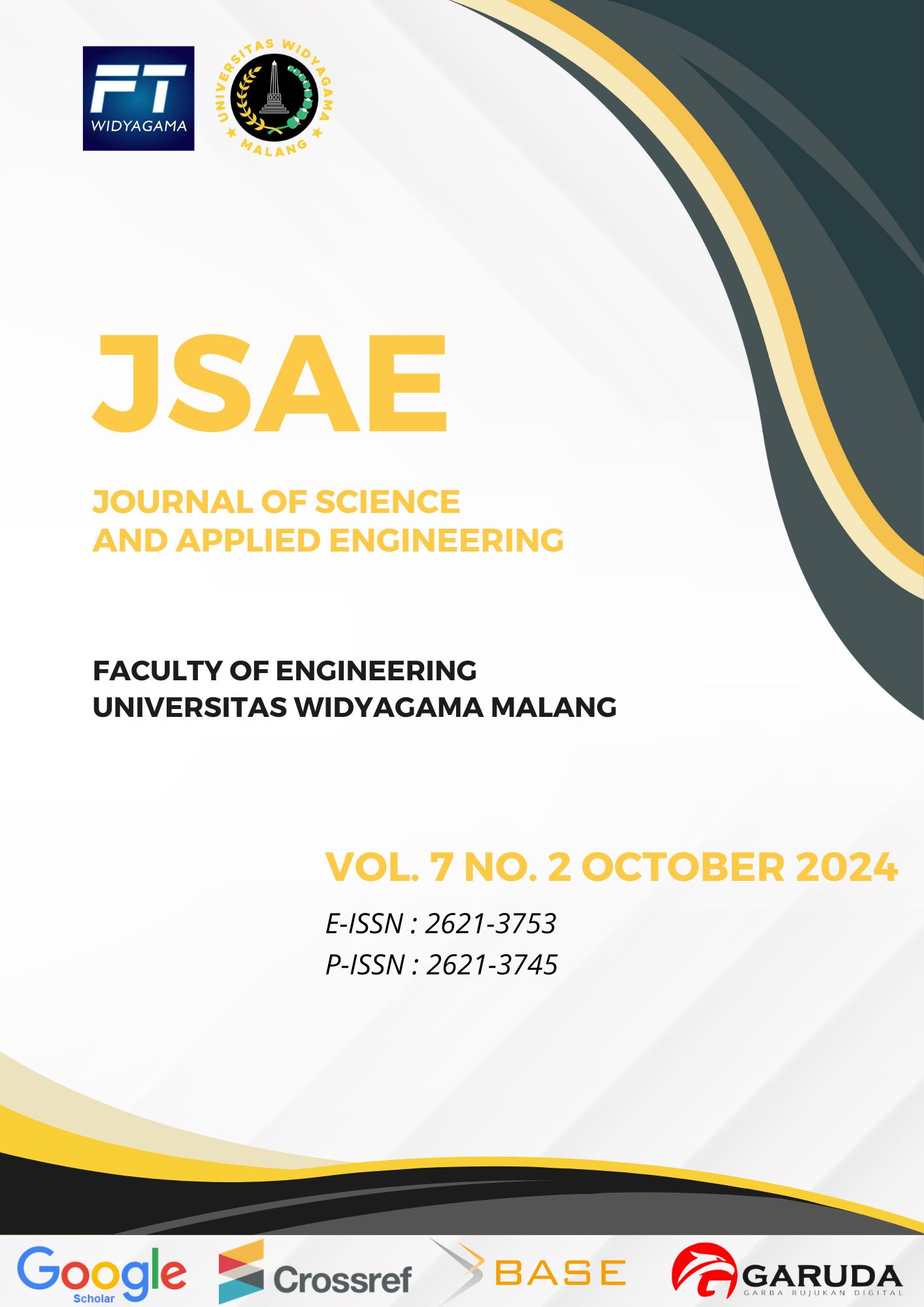RECOMMENDATION SYSTEM FOR DETERMINING MARKETING LOCATION FOR NEW STUDENTS BASED ON K-MEAN CLUSTERING
DOI:
https://doi.org/10.31328/jsae.v7i2.6416Keywords:
K Means Clustering, New Student Marketing, Marketing Location, Marketing Recommendation SystemAbstract
Data on new student admissions is often not utilized, especially at STIKES Widyagama Husada Malang. In fact, this data could be very useful for developing marketing strategies, especially in determining marketing locations for the potential to increase the number of prospective new students in a more targeted and efficient manner. In this research, the implementation of the K-Means Clustering algorithm was chosen to solve the problem of the data mining process for new student admissions. The data in this study uses data on new student admissions for 2020–2023, totaling 375 registrant data with attributes such as gender, age, intended study program, school of origin, major of origin, wave of registration, total registration history, and selected registration information. 3 clusters were produced with dominance in the 2nd cluster; the highest number of new student admissions was 103 registrants, with the highest regional percentage of 57%, namely Kab. Malang (57%), followed by Kota Malang (18%). Meanwhile, the most popular study program is S1 Ilmu Keperawatan (48%). Based on this research, a pattern was produced that can be used as a source of new information for higher education institutions, which can be used to support location decisions in an efficient and targeted marketing strategy for new students, namely in Kab. Malang, so universities can promote the most popular study program, namely the Bachelor of Science in Nursing study program, as an effort to increase the number of prospective new student applicants in the coming year.References
[1] H. Alzoubi, M. Alshurideh, B. Al Kurdi, I. Akour, and R. Aziz, ‘Does BLE technology contribute towards improving marketing strategies, customers’ satisfaction and loyalty? The role of open innovation’, International Journal of Data and Network Science, vol. 6, no. 2, pp. 449–460, Mar. 2022, doi: 10.5267/j.ijdns.2021.12.009.
[2] J. Z. Zhang and G. F. Watson IV, ‘Marketing ecosystem: An outside-in view for sustainable advantage’, Industrial Marketing Management, vol. 88, pp. 287–304, Jul. 2020, doi: 10.1016/j.indmarman.2020.04.023.
[3] M. H. Santoso, ‘Application of Association Rule Method Using Apriori Algorithm to Find Sales Patterns Case Study of Indomaret Tanjung Anom’, Brilliance: Research of Artificial Intelligence, vol. 1, no. 2, pp. 54–66, Dec. 2021, doi: 10.47709/brilliance.v1i2.1228.
[4] I. H. Sarker, ‘Data Science and Analytics: An Overview from Data-Driven Smart Computing, Decision-Making and Applications Perspective’, Sep. 01, 2021, Springer. doi: 10.1007/s42979-021-00765-8.
[5] M. Piernik and T. Morzy, ‘A study on using data clustering for feature extraction to improve the quality of classification’, Knowl Inf Syst, vol. 63, no. 7, pp. 1771–1805, Jul. 2021, doi: 10.1007/s10115-021-01572-6.
[6] J. T. Hutabarat, ‘Penerapan Algoritma K-Means Untuk Menentukan Lokasi Promosi Produk Minuman Penurun Kolestrol Nutrive Benecol Pada PT. Perkasa/Kalbe Nutrritionals’, Medan, Oct. 2018.
[7] N. F. Azmi and N. Sunaryo, ‘Perancangan Sistem Pendukung Keputusan Pemilihan Mahasiswa Berprestasi Dengan Metode AHP Berbasis Web Pada Politeknik LP3I Kampus Padang’, Jurnal Sains dan Teknologi Informatika, vol. 1, no. 2, pp. 80–89, 2023.
[8] B. Sutara, F. Vulture, and R. Novianti, ‘Application of K-Means algorithm with CRISP-DM method in student data analysis as a support for promotion strategy SIDE: Scientifict Development Journal’, 2024. [Online]. Available: https://ojs.arbain.co.id/index.php/side/index
[9] T. R. Kurniawan, E. Chumaidiyah, and L. Andrawina, ‘Application of the k-means clustering method and simple linear regression to new student admissions as a promotion method’, JURNAL INFOTEL, vol. 15, no. 1, pp. 25–33, Feb. 2023, doi: 10.20895/infotel.v15i1.860.
[10] P. Anitha and M. M. Patil, ‘RFM model for customer purchase behavior using K-Means algorithm’, Journal of King Saud University - Computer and Information Sciences, vol. 34, no. 5, pp. 1785–1792, May 2022, doi: 10.1016/j.jksuci.2019.12.011.
[11] S. Gadal, R. Mokhtar, M. Abdelhaq, R. Alsaqour, E. S. Ali, and R. Saeed, ‘Machine Learning-Based Anomaly Detection Using K-Mean Array and Sequential Minimal Optimization’, Electronics (Switzerland), vol. 11, no. 14, Jul. 2022, doi: 10.3390/electronics11142158.
[12] P. Bala, H. Tyagi, R. Vaishnav, S. Tiwari, and S. Kumar, ‘Citation: Dr Preeti Bala (2024), Data Pre-Processing And Its Implications In Data Mining Educational Administration: Theory and Practice’, vol. 2024, no. 5, pp. 9861–981, 2024, doi: 10.53555/kuey.v30i5.4669.
[13] B. Vasey et al., ‘Reporting guideline for the early stage clinical evaluation of decision support systems driven by artificial intelligence: DECIDE-AI’, The BMJ, 2022, doi: 10.1136/bmj-2022-070904.
[14] K. P. Sinaga and M. S. Yang, ‘Unsupervised K-means clustering algorithm’, IEEE Access, vol. 8, pp. 80716–80727, 2020, doi: 10.1109/ACCESS.2020.2988796.
[15] K. Maharana, S. Mondal, and B. Nemade, ‘A review: Data pre-processing and data augmentation techniques’, Global Transitions Proceedings, vol. 3, no. 1, pp. 91–99, Jun. 2022, doi: 10.1016/j.gltp.2022.04.020.
[16] K. Tabianan, S. Velu, and V. Ravi, ‘K-Means Clustering Approach for Intelligent Customer Segmentation Using Customer Purchase Behavior Data’, Sustainability (Switzerland), vol. 14, no. 12, Jun. 2022, doi: 10.3390/su14127243.
[17] R. Vankayalapati, K. B. Ghutugade, R. Vannapuram, and B. P. S. Prasanna, ‘K-means algorithm for clustering of learners performance levels using machine learning techniques’, Revue d’Intelligence Artificielle, vol. 35, no. 1, pp. 99–104, Feb. 2021, doi: 10.18280/ria.350112.
[18] E. Umargono, J. E. Suseno, and V. Gunawan, ‘K-Means Clustering Optimization Using the Elbow Method and Early Centroid Determination Based on Mean and Median Formula’, 2020.
[19] G. Nalli, D. Amendola, A. Perali, and L. Mostarda, ‘Comparative analysis of clustering algorithms and moodle plugin for creation of student heterogeneous groups in online university courses’, Applied Sciences (Switzerland), vol. 11, no. 13, Jul. 2021, doi: 10.3390/app11135800.
[20] M. Faisal, E. M. Zamzami, and Sutarman, ‘Comparative Analysis of Inter-Centroid K-Means Performance using Euclidean Distance, Canberra Distance and Manhattan Distance’, in Journal of Physics: Conference Series, Institute of Physics Publishing, Jul. 2020. doi: 10.1088/1742-6596/1566/1/012112.




